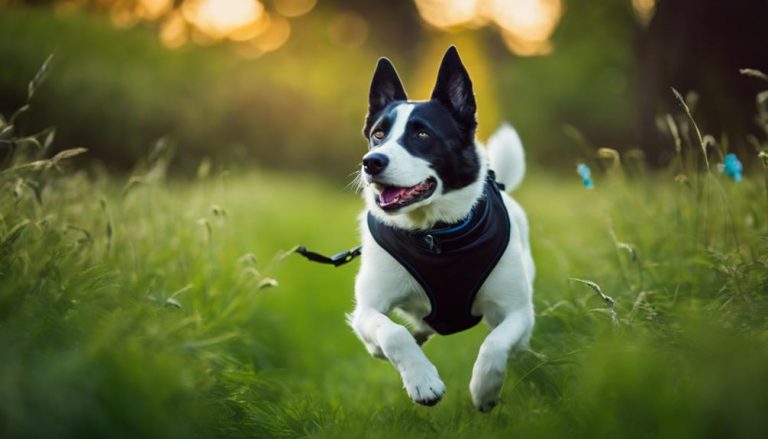Labsky: Characteristics and Temperament
The Labsky is a unique blend of the Labrador Retriever and Siberian Husky, creating a dog that embodies the best traits of both breeds. This mixed breed emerged in the 1990s, combining the friendly nature of the Labrador with the Husky’s adventurous spirit. Standing about 63cm tall and weighing between 18-27kg, the Labsky has a medium-length double coat that comes in a variety of colors. This coat type means they shed quite a bit, so regular grooming is a must to keep their fur in check.
Labskies are known for being energetic and sociable dogs that need plenty of exercises to stay happy. They are perfect for active individuals or families who love spending time outdoors. However, potential owners should be aware that this breed can face several health challenges, such as obesity, hip dysplasia, and eye conditions. Regular check-ups with a vet are essential to keep them healthy and thriving. Owning a Labsky means committing to their care and understanding their unique blend of traits for a fulfilling relationship.
Key Takeaways
- Labskies blend Labrador Retrievers and Siberian Huskies since the 1990s.
- Their coats need regular grooming; exercise keeps them happy.
- Early socialization and training are key for their well-being.
Quick Facts
The Labsky is a unique dog that comes from mixing a Labrador Retriever with a Siberian Husky. This mix started in the 1990s and brings together the best of both worlds. The Labsky, also known as the Husky Lab or Siberian Retriever, is a great example of how mixing breeds can create a dog that’s not only good-looking but also highly adaptable.
This dog has a medium-length double coat that can be white, black, cream, brown, or grey. This kind of coat is perfect for various climates, thanks to the cold-resistant coat from its Husky side and the water-repellent coat from its Labrador side. Labskies are usually about 63cm tall and weigh between 18-27kg, showing off their athletic nature.
They are known for being very active and friendly, which means they need a lot of exercise, socializing, and training. These dogs combine the Husky’s work drive with the Labrador’s love for people, making them excellent companions.
Overview
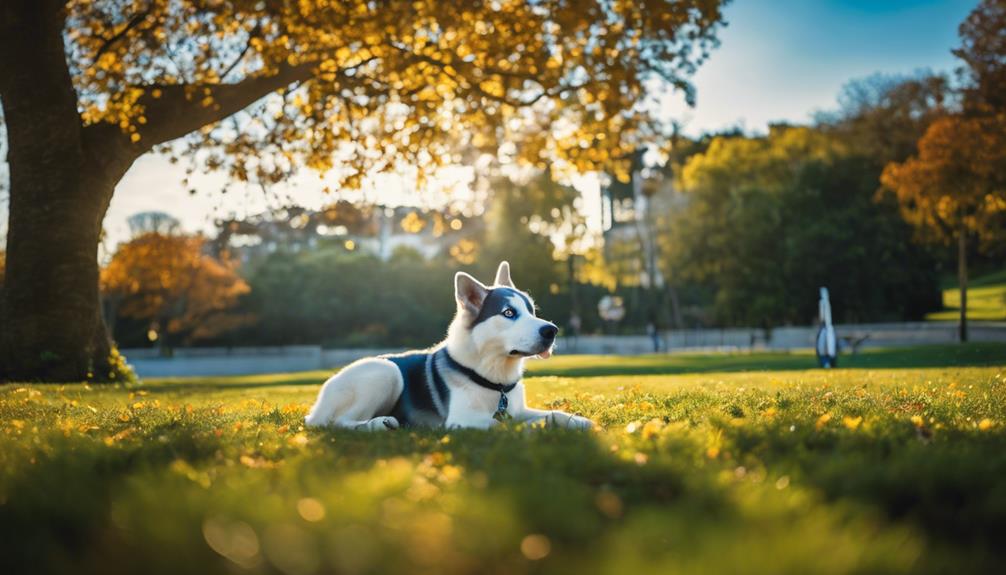
This overview dives into the heritage, temperament, and physical features of the Labsky, a designer dog breed that combines the best of the Labrador Retriever and Siberian Husky. Known for its friendly demeanor and striking looks, the Labsky started to gain popularity in the 1990s. Whether you call it a Siberian Retriever, Husky Lab, or Huskador, this hybrid brings together the notable qualities of its parent breeds.
The Labrador Retriever, with its roots in 19th-century Newfoundland, is loved for its friendly nature and ease of training. On the other hand, the Siberian Husky has a history that spans over 3,000 years, admired for its stamina and endurance. The Labsky inherits a mix of these attributes, making it a remarkable breed.
Labskies are known for their medium-length double coats that can be white, black, cream, brown, or grey, mirroring the Husky’s ability to adapt to various climates. They typically stand about 63cm tall and weigh between 18-27kg, showcasing a balance between the Husky’s agility and the Labrador’s sturdiness. This blend of traits makes the Labsky a medium-sized dog with a unique look and a rich background from both the Labrador Retriever and Siberian Husky.
Energetic and Affectionate Hybrid
Labsky dogs are the perfect mix of the Labrador Retriever’s friendliness and the Siberian Husky’s high energy. They make great pets for families who love to stay active. These dogs inherit the best qualities from both of their parent breeds, making them both lively and loving. Whether it’s going for long walks, enjoying a swim, or playing interactive games, Labskies thrive on various activities that keep both their minds and bodies engaged.
| Trait | Labrador | Siberian Husky |
|---|---|---|
| Energy Level | High | Very High |
| Affection | Very Affectionate | Affectionate |
| Grooming Needs | Moderate | High |
| Exercise Requirements | 60+ minutes/day | 60+ minutes/day |
Because of their high energy levels, Labskies need a lot of exercise every day to stay healthy and happy. Their silky double coats also require frequent grooming to keep shedding under control, especially during the spring and fall. These dogs come in various appearances, and it’s not uncommon for puppies in the same litter to have different eye colors, adding to their charm. Owners should be aware of possible health issues like eye and skin conditions, hip dysplasia, and cancer, and should take steps to keep their Labsky healthy.
Labsky Origins
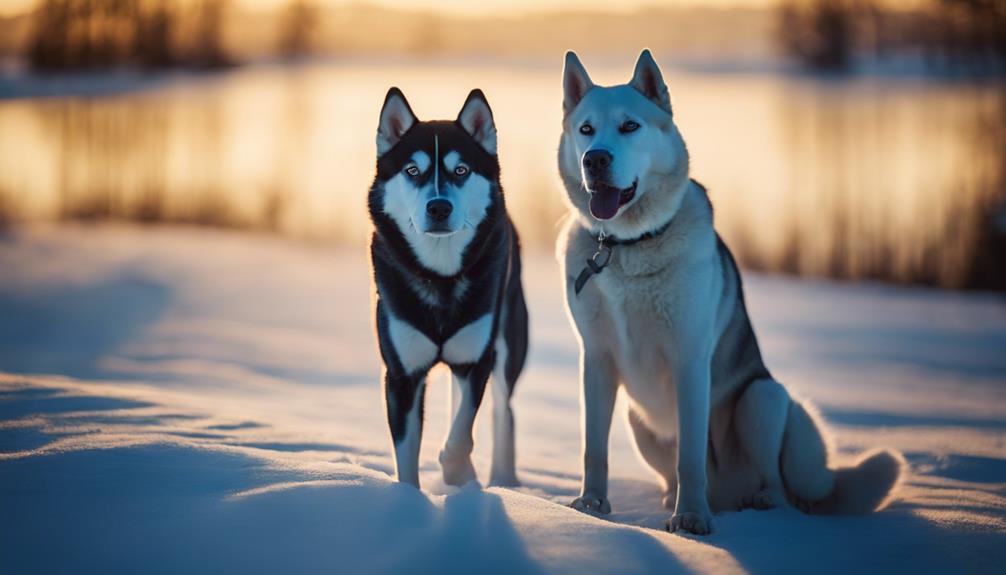
Understanding the origins of the Labsky breed requires us to dive into the unique genetic mix and breeding history of this special dog. The Labsky is a result of carefully mixing the Labrador Retriever and the Siberian Husky. These two breeds bring together a variety of characteristics from their rich and significant backgrounds. To get a clear picture of the Labsky’s background, we’ll look into three main areas:
- Ancestral Hybrid Background
- Insights into Their Breeding History
- How Their Genetic Traits Have Evolved
The Labsky’s ancestral hybrid background is fascinating. It combines the Labrador Retriever’s friendly and loyal nature with the Siberian Husky’s energetic and resilient spirit. This mix not only creates a dog with a stunning appearance but also one with a dynamic personality.
In terms of breeding history, the creation of the Labsky was no accident. Breeders aimed to combine the best traits of the Labrador and the Husky. This selective breeding over time has led to the Labsky we know today – a friendly, high-energy dog that’s both a loyal companion and an adventurous spirit.
Lastly, the evolution of genetic traits in the Labsky breed is notable. This crossbreed has inherited the thick coat of the Husky, making it well-suited for colder climates, and the water-loving nature of the Labrador, making it an excellent swimmer. The combination of these traits from its parent breeds makes the Labsky a versatile and adaptable dog, capable of thriving in various environments.
Ancestral Hybrid Roots
The Labsky is a unique blend of the Labrador Retriever and the Siberian Husky, first created in the 1990s through careful breeding. Known alternatively as the Siberian Retriever, Husky Lab, or Huskador, this mix combines the best features of its parent breeds. The Labrador Retriever, with roots in 19th-century Newfoundland, and the ancient Siberian Husky, with a history reaching back over 3,000 years, provide the Labsky with a rich genetic background. The blend also includes genes from the Labrador Husky, a breed that began in Canada in the 1300s, adding even more diversity to this hybrid. This mix results in Labskies having a wide range of physical features, such as different coat colors, eye colors, and body sizes, showcasing their diverse heritage.
The creation of the Labsky wasn’t just about looks; it was about merging the friendly and hardworking nature of the Labrador with the resilient and energetic character of the Husky. This makes Labskies not just pets but versatile companions capable of various activities, from hiking to participating in dog sports. Their diverse genetics not only contribute to their appearance but also to their adaptable and engaging personalities, making them well-loved by those who choose to bring these dogs into their homes. With such a blend of traits, Labskies stand as a testament to the benefits of thoughtful crossbreeding, offering a mix of qualities that cater to a wide range of dog lovers.
Breeding History Insights
Looking into the breeding history of the Labsky, we see that this unique mix first came about in the 1990s. It was an intentional blend of two well-loved breeds: the Labrador Retriever and the Siberian Husky. The Labrador Retriever, known since the 19th century in Newfoundland, is celebrated for its loyalty and ease of training. On the other hand, the Siberian Husky, a breed with over 3,000 years of history, offers remarkable endurance and a striking look.
It’s crucial to not confuse the Labsky with the Labrador Husky, a completely different breed from Canada with roots going back to the 1300s. This clarification highlights the Labsky’s unique breeding background. Combining qualities from both its parent breeds, Labskies can vary significantly in appearance.
Genetic Trait Evolution
The Labsky breed is a fascinating mix of two popular dogs: the Labrador Retriever and the Siberian Husky. This blend, which started in the 1990s, aimed to combine the best traits of both breeds. The Labrador’s friendly nature and the Husky’s endurance were key qualities breeders wanted in the Labsky. As a result, Labskies showcase a mix of both physical and behavioral traits that reflect their diverse heritage.
A closer look at their genetic background reveals influences from the 19th-century Labrador Retriever and the ancient Siberian Husky. This mix has given Labskies a unique look, personality, and even specific health traits. The creation of the Labsky is a clear example of how breeders have worked to combine the strengths of two breeds into one. This effort highlights the Labsky’s hybrid vigor and stands out as an interesting topic in the world of dog breeding.
Medium to Large Breed
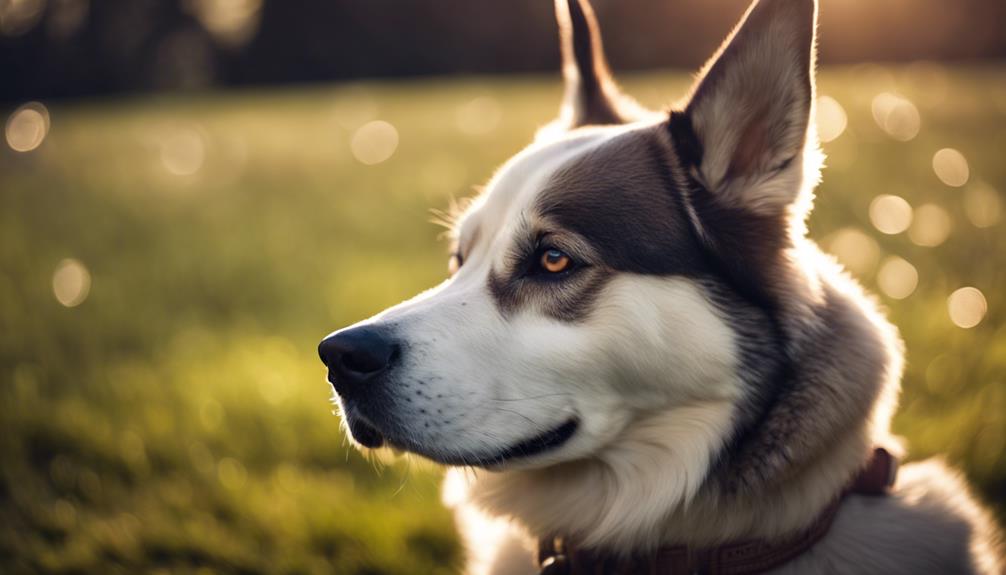
Understanding the needs of Labsky dogs, a mix between Labrador Retrievers and Siberian Huskies, is crucial for their happiness and health. This guide focuses on their optimal living conditions, exercise needs, and health issues. Labskies are medium to large dogs, blending traits from both parent breeds, which affects their care requirements.
Optimal Living Conditions
Labskies thrive in spaces where they can move freely. A home with a backyard is ideal, but they can adapt to apartment living if they get enough exercise. Their thick coats mean they can handle cooler temperatures well, but they also need shade and water in warm weather.
Exercise Needs
Daily physical activity is a must. Aim for at least an hour of exercise, like walks, runs, or playtime in a fenced area. Labskies have lots of energy and a strong work ethic, inherited from their Siberian Husky ancestors. Without enough activity, they may become bored and destructive.
Health Concerns
Pay attention to their diet to prevent obesity, a common problem in Labs. Regular vet check-ups can help catch any signs of hip dysplasia or eye issues, which are prevalent in both Labs and Huskies. Mental stimulation is also vital to keep their keen minds engaged and prevent anxiety.
For Labsky owners, knowing these needs is the first step towards a happy, healthy dog. Regular exercise, proper care, and love will ensure your Labsky leads a fulfilling life.
Ideal Living Spaces
Understanding the needs of Labsky dogs is key due to their medium to large size and energetic nature. These dogs can adjust to apartment living but truly flourish in larger spaces. A big home is crucial for their physical activities and mental exercises, which are important for their happiness. Access to outdoor spaces like yards or parks is beneficial for their well-being.
On the other hand, small homes or places with little outdoor access might not be suitable for a Labsky’s active lifestyle. This could affect their health and joy.
Daily Exercise Needs
Creating the perfect living environment for Labsky dogs is key to addressing their high energy levels and ensuring they stay healthy and happy. These dogs, with their blend of Labrador and Husky genes, need plenty of exercise every day. Two long walks are essential, but they also thrive on more intense activities like swimming, running, and playing games that keep them moving. These activities help prevent obesity, which can be a problem if they don’t get enough exercise.
Families that are always on the go, especially those with a big, safe yard, are perfect for Labskies. They can give these dogs the space and opportunities they need to burn off energy. Regular exercise is crucial for the well-being of these playful and energetic dogs.
Common Health Concerns
Labskies, a mix between Labrador Retrievers and Siberian Huskies, often face health challenges typical of medium and large dog breeds. These include hip dysplasia, allergies, and obesity. It’s crucial to keep an eye on these conditions to ensure they lead a healthy life.
For instance, hip dysplasia is a genetic issue that affects the joint, making walking difficult. Catching it early through regular vet checks can make a big difference.
Allergies can show up as skin problems or reactions to certain foods. It’s essential to figure out what triggers these allergies to manage them effectively.
On the other hand, obesity is entirely preventable. A mix of the right food and enough exercise can keep a Labsky at a healthy weight.
Hypothyroidism is another condition to be aware of. It slows down metabolism and might need medication once diagnosed.
Lastly, these dogs shed a lot, especially during certain times of the year. Regular grooming helps to keep their coat healthy and reduces the amount of hair around the house.
Personality Traits
Labsky dogs are a dynamic mix of energy and love, needing regular interaction and care from their owners. This breed, ranging from medium to large size, is known for its lively and loving nature. However, they might not be the best match for people who are new to dog ownership or those who spend a lot of time away from home. Their high energy levels and friendliness toward kids mean they need to be watched closely to avoid any unintentional rough play because of their size.
While Labskies are generally good with other pets, their prey drive can kick in around smaller animals. This highlights the need for early socialization and training to help them get along well with other pets. Training them can sometimes be a challenge due to their occasionally stubborn nature. Yet, with patience and consistent guidance, they can be trained effectively. Ensuring they grow into well-behaved and friendly pets requires understanding and firm training methods.
Grooming Requirements
Caring for a Labsky with a double-layered coat needs a straightforward grooming routine. This includes brushing, trimming their nails, cleaning their ears, and looking after their teeth to keep them healthy. With their size, standing around 20-25 inches tall and weighing 40-60 pounds, grooming is vital, not just for looks but for their health too. It helps prevent mats, knots, and too much hair from falling out.
To keep their coat in top condition, brushing a few times a week is key. A good grooming routine not only keeps their coat neat but also helps with overall cleanliness and health. Taking care of their coat this way prevents mats and knots, making sure they stay healthy and happy.
Playful yet Loyal Nature
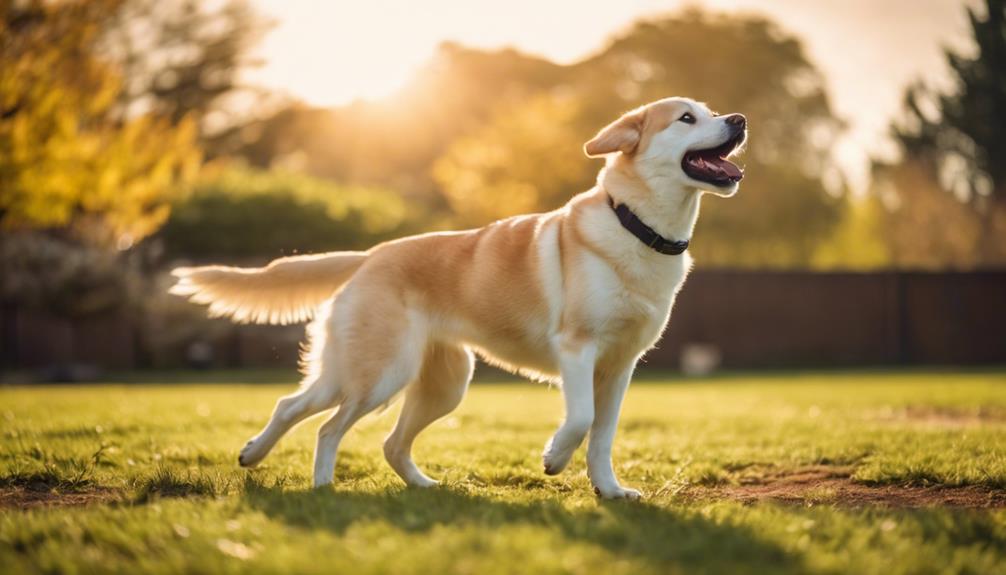
The Labsky dog breed combines a fun-loving spirit with a deep sense of loyalty, making them an interesting case of personality traits that significantly impact their care and how they fit into family life. This blend of characteristics demands specific attention, from ensuring they get enough physical activity to stave off their boundless energy, to focusing on thorough training from a young age to make the most of their smart nature and avoid behavior problems. To grasp the nuances of the Labsky’s personality, we’ll look into three key aspects:
1. Distinctive Personality Traits
The Labsky breed showcases a mix of traits that make them stand out. They inherit a joyful disposition and loyalty from both parent breeds, the Labrador Retriever and the Siberian Husky. This mix results in a dog that’s not only fun to be around but also deeply committed to their human family members. Their intelligence and eagerness to please mean they’re generally responsive to training, though their Husky lineage can bring a streak of stubbornness.
2. Forming Strong Family Bonds
Labskies thrive on close relationships with their human counterparts. They’re known for their ability to form strong attachments, making them excellent companions. Their loyalty and protective instincts mean they often become integral members of the family. However, their need for companionship means they don’t do well when left alone for long periods, highlighting the importance of being part of a family that can provide them with plenty of attention and interaction.
3. The Need for Exercise and Play
Due to their high energy levels, Labskies require regular, vigorous exercise and ample playtime. Without it, they can become restless and exhibit problem behaviors. Engaging them in activities like long walks, runs, and fetch can help manage their energy and satisfy their need for mental stimulation. This not only keeps them physically fit but also strengthens the bond between dog and owner, reinforcing their position as a valued family member.
In understanding these aspects of the Labsky’s nature, families can better prepare to meet their needs, ensuring a happy and harmonious life together.
Unique Personality Traits
Labskies are a lively and loyal mix, connecting deeply with their human families. They thrive on activity and play, needing both mental and physical challenges to stay happy. Their loyalty is strong, making them closely attached to their owners. However, this can lead to separation anxiety if they’re left alone too much.
To manage their sometimes stubborn nature, it’s crucial to start training early, using positive methods. This approach helps them become well-socialized, turning their sociable traits into assets. It’s all about giving them the right balance of attention and independence. For Labsky owners, committing to regular training and engagement is key to a harmonious relationship.
In essence, Labskies are perfect for those ready to actively participate in their pet’s life. They require someone who understands the importance of companionship and training. With the right care, they become not just pets, but loyal friends.
Bonding With Families
Labskies, known for being both playful and loyal, form deep connections with their human families. They love being part of family activities, which strengthens their bond with humans. As great pets for families, their friendly attitude towards kids and tolerance make them a top choice. However, they really don’t like being alone. This can lead to separation anxiety if they’re left by themselves for too long.
To avoid this, it’s crucial to keep them occupied with toys and activities that keep their minds busy. This approach doesn’t just help prevent anxiety; it also makes the bond with their families stronger. Ensuring a happy living environment for Labskies means paying attention to their emotional needs.
Exercise and Play
Labskies, a mix of Labrador and Husky, need a lot of exercise and fun activities to stay healthy and happy. These dogs are very smart and energetic, so they love going for long walks twice a day. They also enjoy activities like swimming, running, and playing interactive games, which are great ways to keep them active and engaged. It’s important for them because it helps prevent obesity, a common issue in Labskies if they don’t get enough exercise.
Secure spaces are crucial for their playtime, like a well-fenced yard, to stop them from wandering off. Spending time playing and exercising with Labskies not only keeps them fit but also strengthens the bond between the dog and its owner, improving family life.
Training Challenges
Training a Labrador Husky mix, known as a Labsky, is key to keeping them healthy and happy. These dogs are full of energy and love to play, but they can also be quite stubborn. This combination means you’ll need a lot of patience and should use positive feedback when they do well.
To make sure your Labsky pays attention and doesn’t get bored, mix up their training with different mental and physical exercises. This approach not only keeps them interested but strengthens your bond.
With the right training, you can tap into their loyalty and make living together more enjoyable for both of you.
Health Considerations
When looking at the health of Labrador Husky mixes, it’s crucial to be aware of their tendency to develop conditions such as Hip Dysplasia, allergies, and obesity. This means owners need to keep a close eye on their pets, ensuring they get regular vet check-ups and follow a diet that keeps them healthy. Hip Dysplasia, for instance, can severely affect a dog’s mobility, making early detection and management key to maintaining their quality of life.
Other health issues like Hypothyroidism and eye problems also need attention. Keeping these dogs healthy involves more than just watching their diet and scheduling vet visits. Proper training and socializing from an early age can help prevent obesity by keeping them active. It also helps avoid behavior problems.
Labrador Husky mixes are known for their intelligence and loyalty, making them quite trainable with consistent and positive methods. This not only improves their physical health but their mental well-being too.
Common Labsky Health Concerns
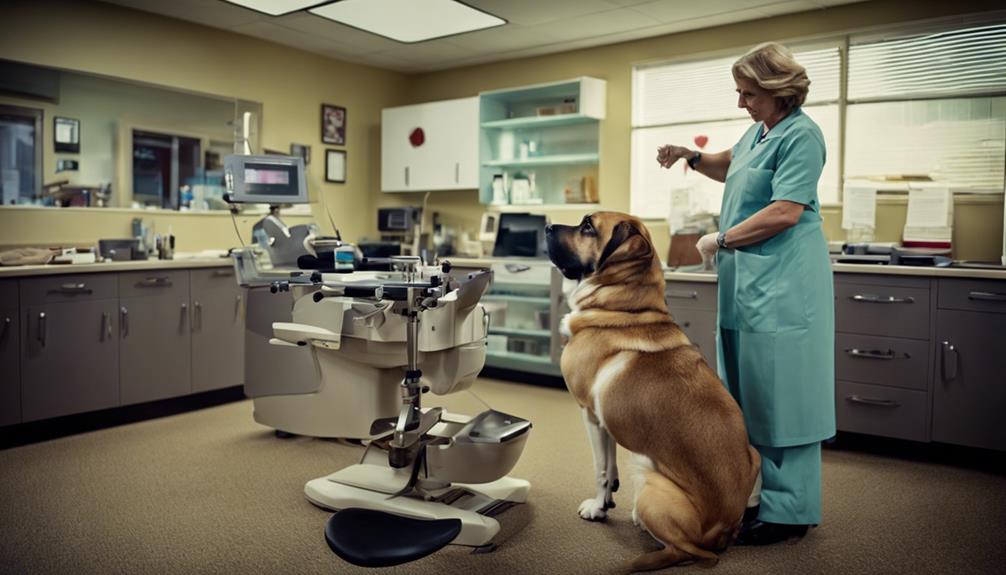
Labskies, a delightful mix of Labrador Retriever and Siberian Husky, are known for their boundless energy and affectionate nature. However, they come with a set of health issues that owners should proactively manage. Understanding and addressing these health concerns early on can help ensure a happy, healthy life for these dogs. Here are three major health concerns for Labsky owners to keep an eye on.
Hip Dysplasia is a genetic issue that affects the hip joints, leading to discomfort and difficulty in movement. It’s crucial for Labsky owners to be aware of this risk and seek veterinary advice to manage it effectively.
Allergies in Labskies can manifest as reactions to certain foods, environmental factors, or skin irritants. Tailoring their diet and care to mitigate these allergies is key to keeping them comfortable and healthy.
Obesity can be a significant health risk for Labskies, making it essential to maintain a balanced diet and ensure they get plenty of exercise. A healthy weight helps prevent additional strain on their bodies, keeping them agile and active.
Hip Dysplasia Risks
Labskies, a mix between Labradors and Huskies, are prone to hip dysplasia. This condition means their hip joints haven’t developed right, causing them pain and making it hard to move around. To help them live a better life, it’s crucial to watch out for signs of this issue and get them checked by a vet regularly. Early detection and action are key to managing their condition.
A good care plan for Labskies with hip dysplasia includes exercises that are safe for them, keeping them at a healthy weight to reduce the pressure on their joints, and giving them joint supplements. These steps help lower the pain and keep them as active as possible. It’s all about making sure they stay happy and comfortable despite their condition.
Managing Allergies
Labskies are known for their friendly and energetic behavior, but they often struggle with allergies. These can include reactions to certain foods, skin issues, and problems caused by their environment. Symptoms such as itching, skin redness, loss of hair, and irritation are common signs that your Labsky might be dealing with allergies.
Managing these allergies requires a comprehensive approach. Changing your dog’s diet, using grooming products designed for sensitive skin, and making changes to their living environment can significantly reduce symptoms. It’s also crucial to have regular vet check-ups. This ensures that any allergy issues are monitored closely and treatments can be adjusted as needed.
For proper diagnosis and management of allergies, it’s vital to consult with a vet. They can provide tailored treatments based on the specific needs of your Labsky, ensuring they stay healthy and happy.
Obesity Prevention
Obesity is a big health problem for Labskies, mainly because they love to eat and often don’t get enough exercise. To prevent obesity in these dogs, it’s crucial to focus on a balanced diet and regular exercise. A diet that controls portions and is full of nutrients is key, as is keeping a close eye on how much food they eat. Regular exercise helps prevent too much fat from building up and can also prevent health issues related to obesity, like joint problems and heart disease. Working with a vet to create a diet and exercise plan that meets your Labsky’s needs is essential. Regularly checking your dog’s weight and overall body condition helps catch any signs of obesity early, which means you can take steps to prevent it and keep your dog healthy and happy.
In short, keeping Labskies healthy involves watching their diet closely and making sure they get plenty of exercises. Consulting with a vet for a personalized plan is a smart move. Regular weight checks are also important to catch any issues early. This approach ensures your Labsky stays in top shape.
Grooming and Exercise Needs
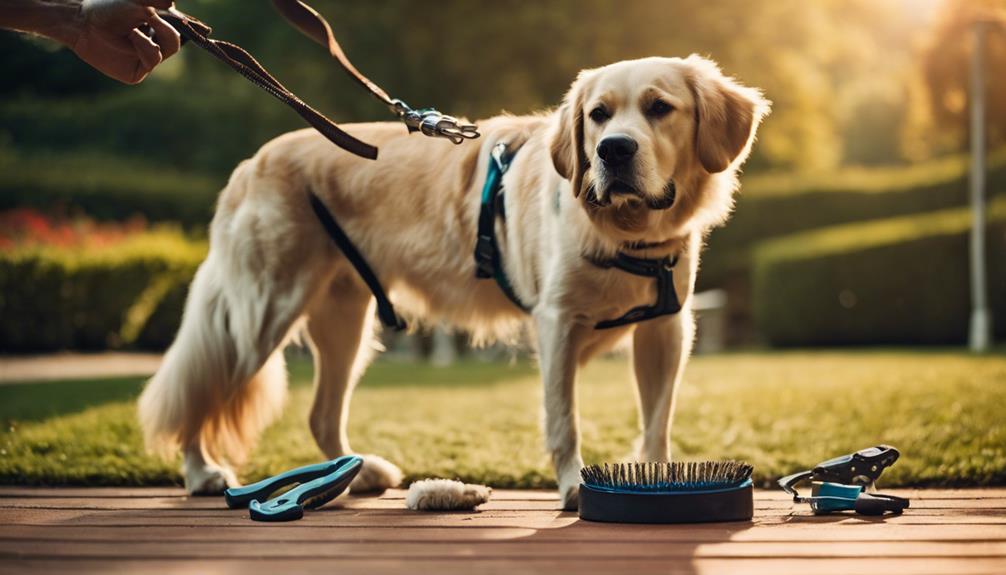
Ensuring the health and happiness of a Labsky involves a comprehensive approach to both grooming and exercise. Given their double-coated fur and lively disposition, it’s essential to establish routines that help control hair loss and keep them physically fit.
Here, we outline three key areas to concentrate on:
- Grooming Practices: Setting up a strict grooming routine is vital for maintaining the coat’s condition and minimizing shedding.
- Exercise Needs: It’s necessary to plan daily activities that match the Labsky’s high energy levels and help prevent weight gain.
- Seasonal Shedding: Adjusting your grooming routine during peak shedding times can help manage the increased hair loss.
A Labsky’s thick coat and zest for life mean they need regular care and plenty of exercise. Regular brushing helps keep their coat shiny and reduces hair around the house. Exercise isn’t just about keeping them slim; it’s also crucial for their mental health, preventing boredom and destructive behaviors. During spring and fall, when shedding is at its highest, more frequent brushing might be needed to keep their coat manageable.
Essential Grooming Tips
Labskies, known for their luxurious double-layered coats, require consistent care to keep their fur in top condition and minimize shedding. Standing 20-25 inches tall and weighing between 40-60 pounds, these dogs benefit from a grooming routine that suits their unique physical characteristics.
Regular grooming not only keeps them looking their best but also helps in spotting any skin issues early on. Proper grooming practices are crucial to avoid knots, tangles, and skin problems. This approach to grooming supports the Labsky’s physical health and plays a vital role in ensuring they lead a happy and healthy life as energetic and lovable pets.
Using the right tools and techniques can make a big difference in maintaining the health of a Labsky’s coat. Brushing them several times a week and using a shampoo formulated for their coat type can help prevent issues before they start. Grooming is more than just keeping them looking good; it’s about keeping them healthy and comfortable. It’s also a chance to bond with your pet, making it a positive experience for both of you.
Daily Exercise Requirements
Labskies require a minimum of 60 minutes of exercise each day to stay healthy and happy. This breed enjoys activities that keep them moving and help prevent weight gain. Running, interactive games, and swimming are great ways to meet their exercise needs, keeping them both physically and mentally fit.
Grooming is also key for Labskies, helping to control shedding and keep their coat in good condition. It’s important to have a secure area for them to play and exercise to avoid any potential escapes. Providing this kind of environment helps ensure the safety of these energetic dogs.
Managing Shedding Seasons
Caring for Labskies during their shedding seasons means having a smart plan that includes both grooming and exercise. Keeping their double-layered coat in top shape requires regular grooming. This means you should brush them well and give them baths now and then. These steps help control shedding by removing loose fur and keeping the coat shiny.
Exercise is also key. Activities like long walks, swimming, and playing games not only help with coat health but also keep your dog fit. Having a safe space for your Labsky to play outside is crucial. Make sure your yard has a strong fence to prevent escapes and give them room for all their energy.
This mix of grooming and exercise is essential for managing shedding seasons. It ensures your Labsky stays healthy and happy.
Exercise for Mental Health
The strong link between physical activity and mental health is clear, especially when it comes to Labsky dogs. Keeping their double-layered coat in good shape through regular grooming is more than just a beauty routine; it stimulates their minds, keeps them calm, and strengthens your bond with them.
A daily dose of exercise, including long walks and play, is crucial for their happiness. These activities not only help burn off their abundant energy but also ward off feelings of anxiety and depression. Taking them outside for activities supports both their physical and mental health, creating a balanced approach to their overall well-being.
This practical insight highlights the importance of grooming and exercise in promoting the mental health of Labsky dogs.
Grooming Tools Overview
Understanding the grooming needs of Labsky dogs is key to supporting their mental health. Labskies, a mix between Labrador Retrievers and Siberian Huskies, require specific tools for their care. A slicker brush and a deshedding tool are essential to manage their double coats, prone to heavy shedding. Using these tools regularly helps keep their coats healthy by removing loose fur and preventing mats, which also reduces shedding around the home.
Nail clippers and dog shampoo are also important for keeping a Labsky clean and comfortable. Regular grooming, combined with daily walks, playtime, and mental exercises, ensures a happy and healthy dog.
Dietary Requirements
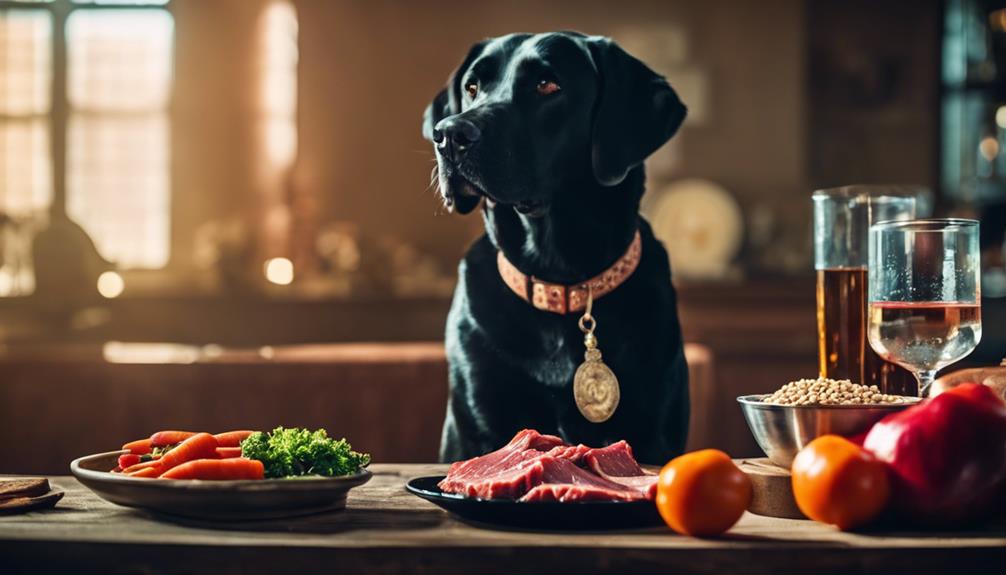
To ensure the health and happiness of Labsky dogs, it’s essential to focus on their dietary needs with a scientific approach. This includes a diet that supports their energy levels, keeps their weight in check to avoid health problems, and chooses foods that are best for their genetic background. It’s crucial to consider these aspects when planning their meals.
- Balanced Nutrition: A diet full of high-quality proteins, fats, and carbs is vital for their energetic lifestyle.
- Weight Management: Setting up feeding routines and controlling portions help prevent obesity, which is key for their health over time.
- Choosing the Right Foods: Opt for foods without fillers and artificial ingredients to boost their health and energy.
Creating a diet for Labsky dogs requires paying attention to their specific needs. Ensuring they get enough nutrients to match their active lifestyle is fundamental. It’s also important to monitor their weight, as obesity can lead to serious health issues. Lastly, selecting the right kind of food is crucial for their overall well-being. By focusing on these areas, you can help maintain your Labsky’s health and vitality.
Balanced Nutrition Essentials
Ensuring Labsky dogs maintain their health and vitality requires a diet that covers all nutritional bases. This means including ample proteins, essential fats, vitamins, and minerals—key for their medium build and energetic nature. Feeding them with high-quality dog food designed for active, medium breeds is a good starting point.
Portion control and a consistent feeding schedule are crucial to prevent weight gain, which can affect a Labsky’s health and lifespan. It’s also important for them to always have access to clean water to help digest their nutritious meals properly.
For diet plans that cater specifically to your Labsky’s needs, considering their age, size, activity level, and health issues, it’s best to talk to a vet. This professional advice can ensure you’re providing the best care for your dog’s unique requirements.
Managing Weight Concerns
To keep Labsky dogs healthy and agile, it’s key to manage their weight with the right diet and exercise. These dogs need a diet rich in high-quality protein to maintain their muscles without putting on extra pounds. Keeping an eye on how much they eat and cutting down on extra snacks is a simple way to help them stay at a healthy weight.
Regular physical activity is just as important. It helps Labskies burn off energy and keeps their metabolism working well, ensuring they keep a lean and fit body. It’s a good idea to talk to a vet to figure out the best food and how much exercise your Labsky needs. This personalized plan makes sure they eat just enough and stay active, which is crucial for their health.
This approach is all about keeping your Labsky dog in top shape, full of energy, and ready to enjoy life to the fullest.
Suitable Food Types
Labskies, a mix of Labrador Retrievers and Siberian Huskies, need a diet rich in high-quality protein to keep up with their energetic lives. Foods like chicken or turkey help them build and maintain strong muscles. Including fruits and vegetables, such as carrots and blueberries, adds vital vitamins, minerals, and antioxidants that boost their health.
It’s best to avoid foods filled with unnecessary ingredients or too many grains, which might upset their stomachs and lower the nutritional value of their meals. A vet’s guidance can help align their diet with their specific needs related to age, weight, and how active they are, ensuring they stay in top shape.
Frequently Asked Questions
Is a Lab Husky Mix a Good Dog?
- High energy and exercise needs.
- Affectionate with families.
- Training can be challenging.
What Type of Dog Is a Labsky?
- Labskies need lots of exercise.
- Training them is a challenge.
- They require careful health monitoring.
How Big Will a Husky Lab Get?
- Adult Husky Lab mix reaches 20-25 inches tall.
- Weighs between 40-60 pounds.
- Growth influenced by diet, health, and exercise.
What Is the Price of Labrador Husky?
- Labrador Huskies vary in price due to breeding and demand.
- Adopting one can be more affordable but consider ongoing costs.
- Health care and maintenance are major lifetime expenses for owners.

